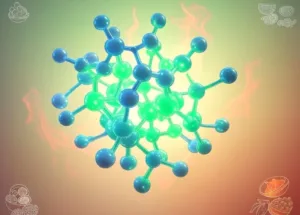
Bioresorbable Microbots
Table of Contents
- Introduction to Bioresorbable Microbots
- How Bioresorbable Microbots Work
- The Science Behind BAMs
- Benefits of Bioresorbable Microbots
- Challenges in Implementing BAM Technology
- Potential Applications Beyond Cancer
- Future Research and Development
- Conclusion
- References
1. Introduction to Bioresorbable Microbots
Cancer treatment has reached a pivotal moment with the advent of bioresorbable microbots. These cutting-edge devices, also called bioresorbable acoustic microrobots (BAMs), offer precise drug delivery to tumors. By targeting affected areas directly, these innovations could reduce harmful side effects common with conventional treatments.
The development of bioresorbable microbots combines advancements in robotics, medicine, and materials science. These micro-scale devices are designed to navigate the human body and deliver therapeutic agents. They leave no toxic residue behind, making them a safer alternative to existing methods.
The global demand for innovative cancer treatments highlights the importance of BAMs. According to the World Health Organization, cancer remains a leading cause of death worldwide. This emerging technology could significantly enhance patient outcomes and transform the medical field.
2. How Bioresorbable Microbots Work
Bioresorbable microbots operate by leveraging acoustic waves to navigate through bodily fluids. These external acoustic controls guide the microbots directly to the tumor site, ensuring precision. Once they reach their target, they release their drug payload, maximizing treatment efficiency.
Table: Comparison of Traditional Drug Delivery vs. Bioresorbable Microbots
| Feature | Traditional Methods | Bioresorbable Microbots |
|---|---|---|
| Delivery Precision | Low | High |
| Systemic Side Effects | High | Minimal |
| Biodegradability | Not Applicable | Fully Biodegradable |
| Retrieval After Use | Often Required | Not Needed |
These microbots degrade naturally within the body. Their biodegradable composition prevents the need for surgical retrieval. This is a significant advantage over other drug delivery systems.
3. The Science Behind BAMs
Bioresorbable microbots are created from biocompatible materials such as polymers and biodegradable metals. These materials ensure that the devices do not harm the body during or after treatment.
Acoustic waves, generated externally, control the movement of these microbots. High-frequency ultrasound waves propel them with precision. Researchers have perfected these waves to ensure consistent navigation in complex biological environments.
The drug-loaded microbots are engineered to release their therapeutic agents only when they reach the tumor. This targeted approach maximizes the impact of the treatment while sparing healthy tissues. For example, BAMs have shown promising results in preclinical trials involving mice.
4. Benefits of Bioresorbable Microbots
The benefits of bioresorbable microbots extend beyond their innovative design. Their ability to deliver drugs precisely and biodegrade offers a range of medical and logistical advantages.
Key Benefits:
- Reduced Side Effects: Traditional cancer treatments often harm healthy cells. Bioresorbable microbots minimize these adverse effects.
- No Retrieval Required: Since these devices dissolve, there’s no need for additional procedures to remove them.
- Enhanced Patient Comfort: The technology allows for less invasive treatment methods.
- Cost Efficiency: Reducing hospital stays and complications makes this approach more economical.
These benefits could revolutionize cancer care. Patients undergoing chemotherapy or radiation often suffer from fatigue, nausea, and other debilitating side effects. BAMs offer hope for less taxing treatments.
5. Challenges in Implementing BAM Technology
While bioresorbable microbots are promising, challenges remain. Developing and deploying these microbots on a large scale involves technical and regulatory hurdles.
Main Challenges:
- Production Costs: Manufacturing BAMs with precision and scalability requires significant investment.
- Regulatory Approval: Ensuring safety and efficacy in human trials is a complex and lengthy process.
- Navigation in Complex Environments: While acoustic waves are effective, navigating dense or irregular tissue remains challenging.
Researchers are addressing these issues by improving production techniques and conducting extensive clinical trials. For example, collaborations between medical institutions and technology companies aim to streamline these processes.
6. Potential Applications Beyond Cancer
The potential of bioresorbable microbots extends beyond oncology. Their precision and biodegradability make them suitable for other medical conditions.
Other Applications:
- Infection Treatment: Targeted delivery of antibiotics to infected tissues.
- Chronic Disease Management: Controlled release of medication for conditions like diabetes or arthritis.
- Neurological Disorders: Potential to deliver drugs directly to the brain for diseases like Parkinson’s.
The versatility of bioresorbable microbots opens new avenues for personalized medicine. These applications demonstrate the broader impact of this technology.
7. Future Research and Development
The future of bioresorbable microbots lies in improving their functionality and expanding their use cases. Ongoing research focuses on enhancing their navigation capabilities and drug-carrying capacities.
Research Goals:
- Integration with AI: Using artificial intelligence to optimize movement and drug delivery.
- Smaller Designs: Reducing the size of microbots for even more precise treatments.
- Broader Range of Materials: Experimenting with new biodegradable materials for enhanced efficiency.
Collaboration among global researchers is accelerating progress. For example, institutions in the U.S., Europe, and Asia are contributing to breakthroughs in this field.
8. Conclusion
Bioresorbable microbots represent a transformative advancement in medicine. Their ability to deliver drugs precisely, biodegrade safely, and minimize side effects addresses critical gaps in current cancer treatments. With further research and development, these innovations could redefine how we approach not only oncology but also a range of other medical conditions.
The path to widespread adoption may have challenges, but the potential benefits far outweigh the hurdles. As technology advances, BAMs are set to become a cornerstone of modern healthcare.
References
- Caltech News. Revolutionary Microrobots Shrink Tumors in Groundbreaking Study.
- World Health Organization. Cancer Statistics.
- MIT Technology Review. Acoustic Innovations in Medicine.






